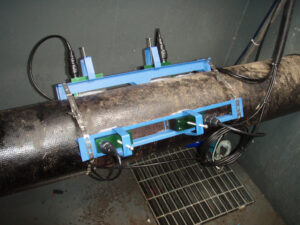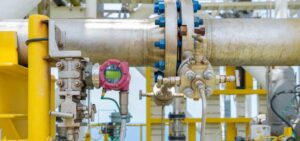Ensuring the accuracy and longevity of flow measurement devices is a top priority for industries ranging from water treatment to chemical processing. A popular device utilized for these purposes is the Magnetic Flow Meter, also known as a Mag Meter. However, the key to harnessing the full benefits of these meters lies in their proper calibration and maintenance. This comprehensive guide will walk you through the steps of calibrating and maintaining Magnetic Flow Meters for optimal performance.
Understanding Magnetic Flow Meters
Magnetic Flow Meters utilize Faraday’s Law of Electromagnetic Induction to measure the flow rate of conductive fluids. They are known for their accuracy, lack of moving parts, and ability to measure a wide range of fluid types. Despite their robust nature, regular calibration and maintenance are crucial for ensuring their long-term performance and accuracy.
Steps to Calibrate Magnetic Flow Meters
- Verify Meter Installation
Before calibration, ensure that the meter is installed correctly according to the manufacturer’s guidelines. The orientation, pipe size, and location all influence the meter’s performance.
- Initial Verification
Perform an initial verification check of the flow meter. This involves checking the meter’s settings and output against its specifications. Any inconsistencies should be addressed before proceeding.
- Flow Simulation
Calibration typically involves simulating a range of flows and comparing the meter’s readings against a reference standard. Specialized calibration rigs or flow loops are often used for this purpose.
- Adjustments
If discrepancies are found, adjustments should be made to the meter’s settings to bring it back into alignment with the reference standard.
- Verification
Once adjustments have been made, a final verification check should be performed to confirm that the meter is operating within its specified accuracy.
Maintaining Magnetic Flow Meters for Optimal Performance
- Regular Inspections
Regular visual inspections can help detect any physical damage or issues such as leaks, loose connections, or buildup in the flow tube.
- Cleaning
Over time, deposits can form in the flow tube, affecting the meter’s accuracy. Regular cleaning, as per the manufacturer’s instructions, can prevent this buildup and ensure consistent readings.
- Regular Calibration
Regular calibration is a critical aspect of maintaining any flow meter. The frequency of calibration will depend on your specific application and the meter’s performance history.
- Software Updates
Ensure the meter’s firmware and software are up to date. Software updates often include improvements to the meter’s performance and functionality.
- Record Keeping
Keep accurate records of all inspections, calibrations, and maintenance activities. This information can be useful for troubleshooting issues and planning future maintenance activities.
Conclusion
The calibration and maintenance of Magnetic Flow Meters are essential tasks that ensure these devices continue to provide accurate and reliable flow measurements. By following the steps outlined in this guide, you can effectively calibrate and maintain your Magnetic Flow Meters, ensuring optimal performance and extending their lifespan.
Remember, the key to successful flow meter maintenance lies not only in regular checks and calibrations but also in understanding the specific requirements of your application and the manufacturer’s guidelines. By staying proactive in your maintenance efforts, you’ll ensure a robust and efficient flow measurement system that stands the test of time.





